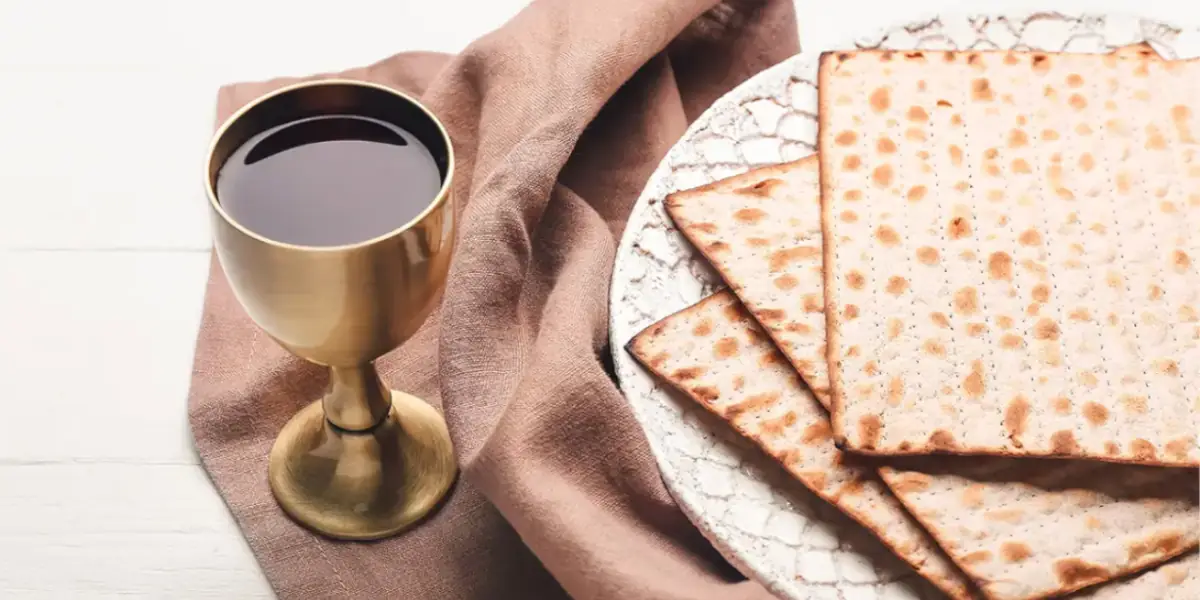The Lord’s Supper is one of the two ordinances that Christ instructed Christians to observe. (The other is baptism in Matthew 28:19.) There are three terms for it: Communion, Lord’s Table, and Lord’s Supper. It is a command for Christians. When we partake of the Lord’s Supper, we do it to REMEMBER what Christ did on the cross for us.
Luke 22:19-20 And he took bread, and gave thanks, and brake it, and gave unto them, saying, This is my body which is given for you: this do in remembrance of me. Likewise also the cup after supper, saying, This cup is the new testament in my blood, which is shed for you.
The Lord’s Supper is to be done as often as the local church decides. Some churches have it once a month others chose to have it only once or twice a year – usually near Christmas and Easter. The Bible does not set a definite time for communion.
The Lord’s Supper is a good time for Christians to examine themselves to see if they are “unworthy.” If you know that you are living in sin or have committed a sin against God or another person, you should not participate in the Lord’s Supper. You need to make that sin right before God and the others involved. (1 John 1:9) Communion gives us that opportunity to do just that. Taking communion while knowingly being in sin can bring judgment to the Christian.
1 Corinthians 11:28-30 But let a man examine himself, and so let him eat of that bread, and drink of that cup. For he that eateth and drinketh unworthily, eateth and drinketh damnation to himself, not discerning the Lord’s body. For this cause many are weak and sickly among you, and many sleep.
***Just a side note, we should be examining ourselves often, not just at the Lord’s Supper. It should be done regularly, monthly or weekly…most of us can and should do it daily, if we are truthful with ourself. We as Christians should not want anything that can hinder our relationship with God.
Once we have examined ourselves, taken care of our “unworthy” actions, and asked God to forgive us, then we can partake in the Lord’s Supper.
1 Corinthians 11: 23-26 are often recited during the communion service:
[23] For I have received of the Lord that which also I delivered unto you, That the Lord Jesus the same night in which he was betrayed took bread: [24] And when he had given thanks, he brake it, and said, Take, eat: this is my body, which is broken for you: this do in remembrance of me. [25] After the same manner also he took the cup, when he had supped, saying, This cup is the new testament in my blood: this do ye, as oft as ye drink it, in remembrance of me. [26] For as often as ye eat this bread, and drink this cup, ye do shew the Lord’s death till he come. [27] Wherefore whosoever shall eat this bread, and drink this cup of the Lord, unworthily, shall be guilty of the body and blood of the Lord.
The Lord’s Supper has many symbols. A symbol is a thing that represents or stands for something else, especially a material object representing something abstract.
THE BREAD: Churches often use Matzo crackers to represent the bread.
A Matzo cracker has three traits that help us remember Christ on the cross.
- It is made without yeast in it; yeast or leaven in the Bible refers to sin, the cracker has no yeast in it, as Christ is without sin.
- It has holes in it, reminding us about Christ’s body being pierced through with nails in His hands and feet, thorns on His head, and with a spear through His side.
- It has dark stripes, showing the many stripes Christ received during the flogging from the Roman Soldiers before he was placed on the cross.
THE CUP: This is a small cup with the “fruit of the vine” grape juice.
- Grape juice is used, unfermented; fermentation is a result of yeast, and as stated above, yeast is a picture of sin, and Christ had no sin.
- The deep red color reminds us of the shed blood that flowed from Christ’s body during the crucifixion process.
- The juice, “blood,” reminds us that without the shedding of blood, there is no remission of sin.
Hebrews 9:22 And almost all things are by the law purged with blood; and without shedding of blood is no remission.
Just as baptism is a picture of Christ’s death, burial, and resurrection. The Lord’s Supper reminds us of the suffering that Christ endured so that we could have eternal life.
1 Peter 2:24 Who his own self bare our sins in his own body on the tree, that we, being dead to sins, should live unto righteousness: by whose stripes ye were healed.
1 Peter 3:18 For Christ also hath once suffered for sins, the just for the unjust, that he might bring us to God, being put to death in the flesh, but quickened by the Spirit:
John 6:47 Verily, verily, I say unto you, He that believeth on me hath everlasting life.
